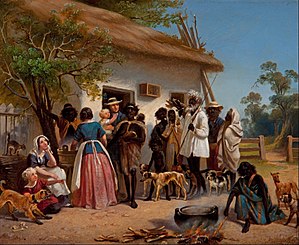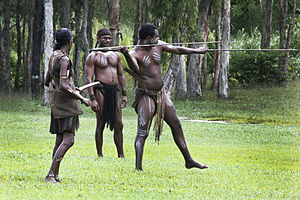IND/Revisiting Human Rights
We have already considered this important topic earlier in the subject. The following two sections revise this material (and provide a small amount of new material) as it is central to the objective of this subject. It also provides important background and framing for the final topic on Strategies and Protocols.
Revisiting the United Nations and the Universal Declaration of Human Rights
While the idea of rights and justice for oppressed groups of people has a very long history, since the end of World War II the United Nations (UN) has been the global organisation which has developed statements of human rights and investigated breaches of human rights throughout the world.
The UN has a number of different ‘instruments’ which outline different types of human rights. These include, for example, the Convention for the Elimination of All Forms of Racial Discrimination which sets out the human right to live free from racial discrimination, the International Covenant on Economic, Social and Cultural Rights, which covers human rights regarding economic life or the right to live a distinct cultural life, and the Convention on the Elimination of all Forms of Discrimination against Women which explains the human rights of women.
Many governments around the world (but not all of them) become signatories to these instruments, that is, they agree to uphold the human rights set out by the UN for all of the people who live in their country. Governments also pass domestic laws to protect these rights, for example, the Racial Discrimination Act (1975) was passed in Australia to protect Australians from racial discrimination.
Once a country has become a signatory to these human rights instruments, the UN will investigate their progress towards protecting those human rights on a regular basis. Countries are under no legal obligation to uphold the rights in the instruments, but the UN carries significant moral weight and violating human rights can damage a country’s international reputation.
The United Nations system of human rights monitoring is a complex system of international legal instruments but it has very important, practical implications for Indigenous peoples, not just in Australia but right around the world. Indigenous organisations and individual Indigenous people, like all other organisations and individuals, can appeal directly to the UN about violations of their human rights.
Aboriginal people and Torres Strait Islanders have a long history of using international activism to fight for their human rights. This include, for example, the tradition of petitioning people both in Australia and overseas which we examined in Module 2. Consider the following quote from Indigenous leader Professor Mick Dodson:
| “ | …the stories and sufferings were the same. We were all part of a world community of Indigenous peoples spanning the planet; experiencing the same problems and struggling against the same alienation, marginalisation and sense of powerlessness. We had gathered there united by our shared frustration with the dominant system in our own countries and their consistent failure to deliver justice. (Dodson, 1998, p. 19). | ” |
Indigenous Australians have used the UN human rights system in particular to bring international attention to violations of their human rights, attempting to remedy these violations. As Sarah Pritchard, an international human rights lawyer, has written, “Indigenous peoples‟ organisations have been extremely effective in their efforts to secure recognition by the international legal system of the rights which arise from their specific historical and contemporary experiences” (Pritchard, 1998, p. 3).
Revisiting the United Nations and the Universal Declaration of Indigenous Peoples?
James Anaya, the UN Special Rapporteur on the Rights of Indigenous Peoples, has stated there should not have to be a special instrument to protect the rights of indigenous peoples, because all people have human rights. However, due to the particular historical and contemporary experiences of indigenous peoples there is a need for this special instrument (Anaya, 2009, pp.58-63).
The Declaration is a resolution adopted by the UN General Assembly in New York on 13 September 2007. As such, it is not a legally binding document under international law. However, given the influence of the UN, and the overwhelming support the UNDRIP received it will certainly exert great influence over the development of international law in this area.
Only four countries initially voted against the resolution (as compared to the 144 countries that voted for it). The countries opposed were Australia, New Zealand, the US and Canada. It is no coincidence that all of these four countries had their foundations as British settler colonies, and their formation thus depended on indigenous dispossession. Although all four countries later reversed their opposition, this initial rejection is revealing. The Australia government eventually endorsed the resolution in 2009.
It has 23 preambular clauses and 46 articles. Articles 1–40 outline particular individual and collective rights and many include state obligations to protect or fulfil those rights.
The UN Declaration on the Rights of Indigenous Peoples is significant to Indigenous Australians for a number of reasons:
- The Declaration took over twenty years of negotiation by indigenous peoples, governments and human rights experts. Many Aboriginal and Torres Strait Islander people were heavily involved.
- The Declaration is significant because indigenous peoples were involved in drafting it. This means the people who held the rights directly participated in the development of the instrument to protect those rights.
- The Declaration is recognition that indigenous peoples are entitled to all human rights as a collective.
- The rights in the Declaration are standards to ensure the survival, dignity and well-being of indigenous peoples. (Human Rights Commission, 2009, p. 6).

